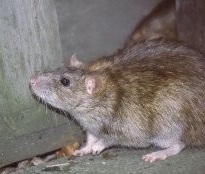The results of a one-year study by Columbia University using DNA technology on 133 rats caught in New York revealed they carried a wide range of dangerous bacteria and viruses.
The results were published in mBio – the journal of the American Society for Microbiology – and revealed the rats were carrying a cocktail of pathogens capable of causing numerous food-borne illnesses and a variety of pathogens that cause fevers including Seoul hantavirus, which had never before been found in New York.
|
The paper comments that most emerging infectious diseases of humans originate in animal reservoirs. This has led to wide-scale microbial surveillance and discovery programmes in wildlife, particularly in the developing world. Strikingly, less attention has been focused on commensal animals like rats, despite their abundance in urban centers and close proximity to human populations. With the Ebola edidemic being such a topical subject, the irony of this was not lost on the research leader, Ian Lipkin, a professor of neurology and pathology at Columbia University, who pointed-out that no-one was looking right under their own noses. |
|
|
|
These results were published with impeccable timing just before the start of PestWorld 2014. Although the researchers could not say how ill New Yorkers were getting from these rat-borne agents, but already the results were raising alarms among experts. Commenting on these results, Dr Peter Daszak, president of EcoHealth Alliance (a US-based organisation that conducts research and outreach programmes on global health, conservation and international development) called the study “shocking and surprising.”
“The problem is rats have evolved with us, they spread around the world as we’ve moved around the world, really good at living hand in hand with human populations,” Daszak said. Read the mBio report abstract, or the report in full. |
||


